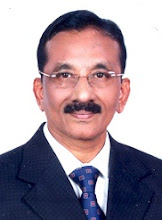Crown Prince Mohammed bin Salman’s tenure has been marked by significant changes in Saudi Arabia. Since his appointment in June 2017, he has pursued ambitious reforms through the Vision 2030 initiative. Here are some key highlights:
Economic Diversification: Vision 2030 aims to
reduce Saudi Arabia’s dependence on oil revenues by diversifying the economy.
Initiatives include privatization, investment in non-oil sectors, and the
creation of a $2 trillion sovereign wealth fund.
Social Reforms: The Crown Prince has worked
to modernize societal norms, empower women, and promote entertainment and
tourism. These efforts have faced resistance but are crucial for long-term
growth.
Infrastructure Development:
Projects like NEOM, a futuristic city, and the Red Sea Project demonstrate the
country’s commitment to infrastructure development and attracting global
investors.
Youth Empowerment: Vision 2030 focuses on
creating jobs for the youth population. Encouraging entrepreneurship and
innovation is essential for sustainable growth.
Global Engagement: Saudi Arabia seeks to
enhance its global standing through diplomatic efforts, cultural exchanges, and
international partnerships.
Crown Prince Mohammed
bin Salman has significantly transformed Saudi Arabia since his appointment.
Let’s delve into some key aspects of this transformation:
Vision 2030:
Launched in response to declining oil prices, Vision 2030 aims to diversify the
Saudi economy. It includes establishing a $2 trillion sovereign wealth fund
(the world’s largest) and privatizing sectors such as airports, education, and health.
Vision 2030, Saudi
Arabia’s ambitious economic diversification plan, faces several challenges:
Oil Dependency: The Saudi economy heavily relies on oil revenues. Transitioning away from this dependence requires significant effort and investment.
Cultural Shift:
Vision 2030 aims to transform societal norms, empower women, and encourage
entertainment and tourism. However, these changes encounter resistance from
conservative elements.
Youth Unemployment:
The plan seeks to create jobs for the growing youth population. Achieving this
goal amidst economic reforms is challenging.
Private Sector
Development: Encouraging private sector growth and innovation is
essential. However, bureaucracy and historical reliance on public sector jobs
pose obstacles.
Global Competition:
Saudi Arabia competes with other countries for foreign investment, talent, and
market share. Attracting global investors requires overcoming perceptions and
geopolitical concerns.
Non-Oil Revenues:
Since 2016, non-oil revenues in Saudi Arabia have nearly tripled. The country
is also experiencing steady growth in non-oil exports, rising from 2.2% in 2017
to 2.5% in 20182.
Investment and
Spending: Crown Prince Mohammed bin Salman introduced the “Partner”
program to strengthen private-sector collaboration. The total investment
expected in the national economy until 2030 is 12 trillion riyals, excluding
government spending and private consumption3.
Metropolitan
Development Strategy: Salman’s development plan for Riyadh, known as MedStar,
focuses on economic, environmental, infrastructural, cultural, and urban
aspects. It aims to diminish the power of the religious establishment and
diversify the economy.
Overall, Salman’s
leadership has been marked by ambitious reforms and economic diversification,
positioning Saudi Arabia for a dynamic future.
Mega Projects in Saudi Arabia
|
|
|
|
|
|
|
Project Name |
Value |
Total value on commissioned
Date |
Total Area |
Completion Date |
|
MASAR MAKKAH |
$9.8 Billion |
$8.34 Billion |
1.38 million sqm |
2030
|
|
RUA ALMADINAH |
$37 Billion |
$,8Billion |
1.5 Million sqm |
2030
|
|
KING ABDULLAH ECONOMIC CITY |
$27 Billion |
$13 Billion |
1.7 Million sq |
2028 |
|
JABAL OMAR |
$5.6 Billion |
$4 Billion |
2 Million sqm |
2026
|
|
ALULA |
$15 Billion |
$6.5 Billion |
22,500 sq km |
2027
|
|
NEOM |
$500 Billion |
$237 Billion |
26,500 sq km |
2030
|
|
RED SEA GLOBAL |
$23.6 Billion |
$21 Billion |
28,000 sq km |
2030-35
|
|
THAKER MAKKAH |
$7 Billion |
$1.3 Billion |
4 Million sqm |
2030
|
|
MARAFY |
$5 Billion |
$400 Million |
4 Million sqm |
TBC
|
|
ROSHN |
$1.9 Billion |
$1.8 Billion |
4 Million sqm |
2026
|
|
SEVEN |
$1.4 Billion |
$400 Million |
4 Million sqm |
2026 |
|
JEDDAH CENTRAL |
$20 Billion |
$4.5 Billion |
5 Million sqm |
2030 |
|
JEDDAH ECONOMIC CITY |
$30 Billion |
$1.7 Billion |
5.3 Million sqm |
TBC |
|
KNOWLEDGE ECONOMIC CITY |
$8 Billion |
$3.35 Billion |
6.8 Million sqm |
2025 |
|
SHAMS AL AROUS |
$2 Billion |
$500 Million |
863,000 sqm |
2025 |
Source: Knight Frank, MEED Projects

